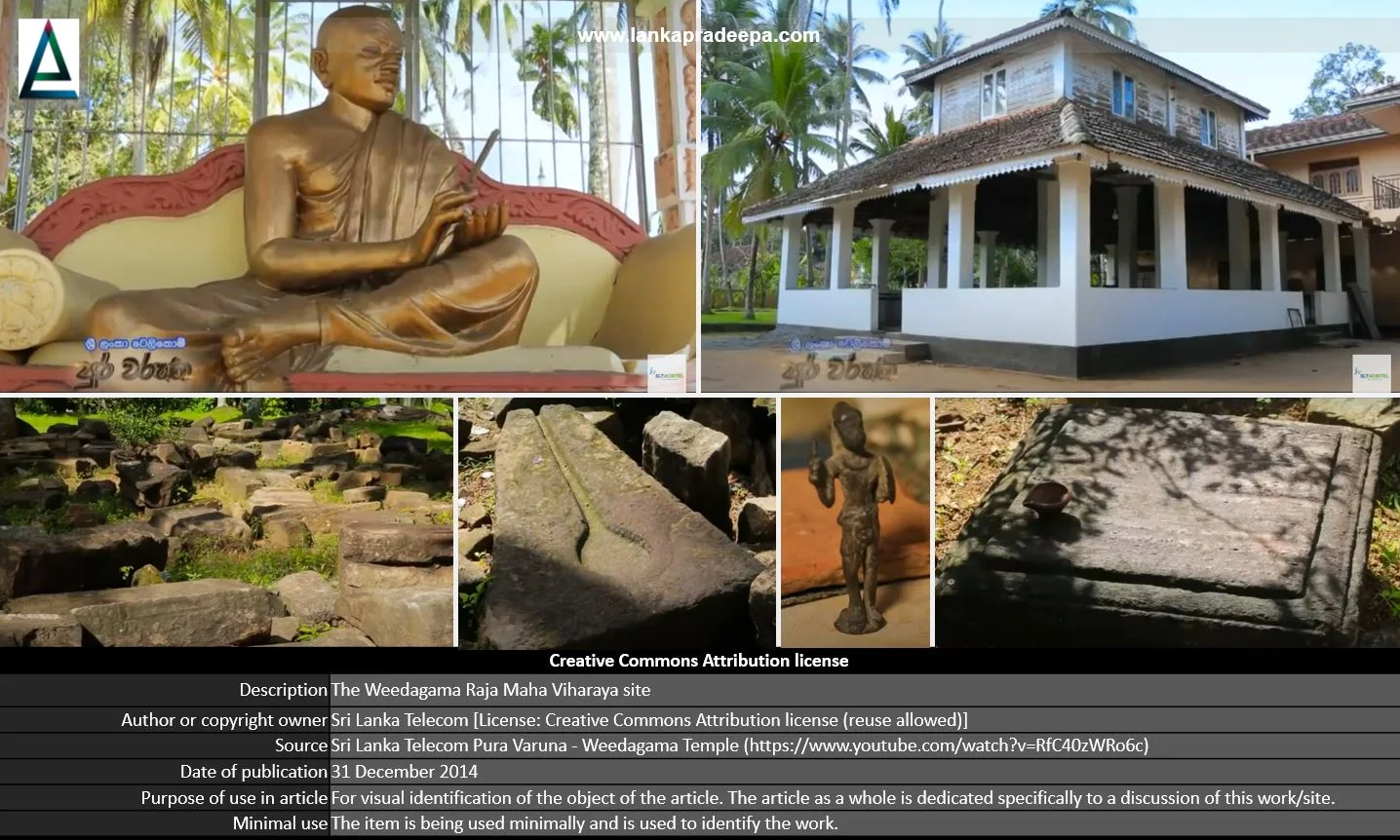
|
Weedagama Raja Maha Viharaya |
Weedagama Raja Maha Viharaya, also known as Veedagama Sri Ganananda Pirivena (Sinhala: වීදාගම රජ මහා විහාරය), is a Buddhist temple situated in Bandaragama in Kalutara District, Sri Lanka.
History
As recorded in the chronicle Mahavamsa, the history of this temple runs back to the reign of King Parakramabahu IV (1302-1326 A.D.) of Dambadeniya (Abeyawardana, 2002). It is said that this temple was bestowed to a Cholian monk who had received the title "Rajaguru" (royal preceptor) from the king (Abeyawardana, 2002). During the Kotte Period, this temple became one of the most popular monastic colleges in the country (along with Padmavathi Pirivena at Keragala, Sunetradevi Pirivena at Pepiliyana, Vijayaba Pirivena at Totagamuwa and Siri Perakumba Pirivena at Kotte) for oriental languages such as Pali, Sinhala, Sanskrit and subjects such as medicine, astrology, oriental sciences and arts (Abeyawardana, 2002). The scholar-monk Veedagama Maitreya Thera who is highly commended for his works such as Buduguna Alankaraya, Lovedasangrahaya, Kavya Lakshana Minimalawa, Hamsa Sandeshaya, and Elu Attanagaluvamsaya, once resided and headed this monastic institute. It is said that the four-year-old prince who later ascended the throne as Parakramabahu VI (c.1412-1467 A.D.), grew up at this temple after King Vira Alakeshwara was taken captive to China.
Weedagama Viharaya is believed to be affiliated to Mahanethpa Mula, one of the four faculties of Abhayagiriya Monastery. During the Portuguese Period (1597-1658 A.D.), this temple was destroyed and a church is said to have been erected at the place (Abeyawardana, 2002). However, after re-establishing the Buddhist temple, the restoration and renovation works of the present Viharaya were begun in 1880 (Abeyawardana, 2002). Presently, an image of Veedagama Maitreya Thera and stone slabs containing the verses of Lovedasangrahaya have been installed in the temple premises.
Ruins
There are no remains of ancient buildings that can be attributed to the historical period. However, a few stone columns, Sandakada Pahana (moonstones), Korawak Gal (wingstones) have been unearthed from the site.

Related Posts
Read Also
References
Books
1) Abeyawardana, H.A.P., 2002. Heritage of Sabaragamuwa: Major natural, cultural and historic sites. Sabaragamuwa Development Bank and The Central Bank of Sri Lanka. ISBN: 955-575-077-7. p.116.
Location Map
Dynamic Google Map
Attribution
To Whom
LankaPradeepa.com extends its gratitude to Malsha M. Ranasinghe for providing the necessary photographs required for this article. All the photos are published here with the permission of the author.


